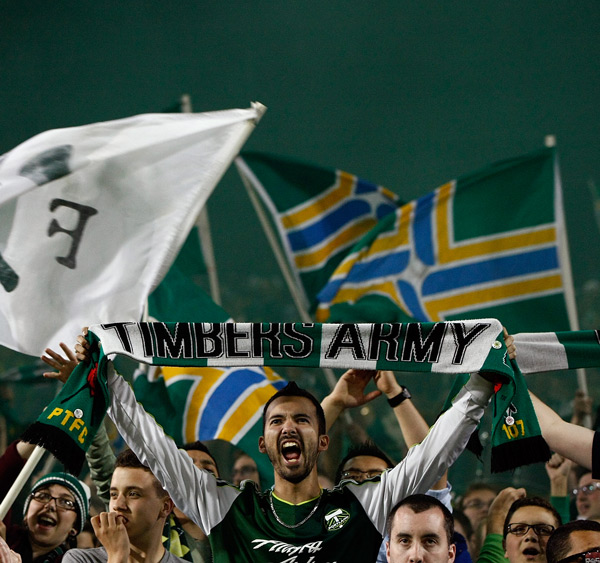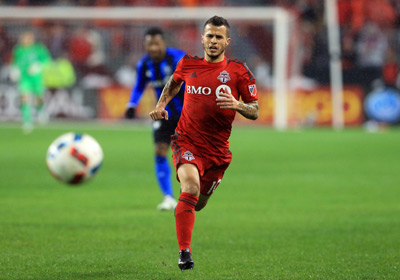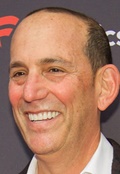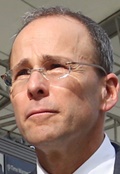 |
Pacific Northwest expansion helped the league build a passionate supporter culture.
Photo by: GETTY IMAGES
|
Over the last 15 years, one of the key driving forces behind Major League Soccer’s growth has been the success of its expansion clubs.
Whether it was the league’s introduction into Canada via Toronto (2007), the acceleration of supporter culture thanks to the Pacific Northwest and fans in Seattle (2009) and Portland (2011), or the rebirth of the league in the Southeast with Orlando (2015) and Atlanta (2017), these local storylines were crucial in elevating the league nationally.
Now, the league is charting its next phase in the most formal and sizable expansion in its 22-year history. Following a call for applications in December for its next four expansion spots, MLS received 12 bids from interested ownership groups — a total that eclipses the number of teams that were in the league in 2004.
MLS SEASON OPENER
■ BID CITIES: In their own words, the 12 expansion hopefuls answer why MLS and why their city
■ ON THE MAP: Interactive map with demographic info on each bid city
■ READY TO DEBUT: Atlanta and Minnesota franchises ready for the spotlight
■ EXPERTS WEIGH IN: Which cities do they like for expansion?
■ TEMPORARY HOMES: College venues serve as interim homes for clubs
The bid cities check off many boxes for MLS: New state or region. Doubling or tripling down geographically. Replacing teams/leagues that left, or playing alongside them. Successful owners in sports. First-timers in a top-tier league. Soccer veterans and newbies.
MLS has seen expansion successes across all sides of those equations. The league’s determination if an expansion bid was worth investigating often started with looking at three key principals: ownership, stadium plan and market strength. While those core tenants have not changed, this next wave also offers new possibilities.
“In the early days, expansion was driven by opportunity. Did we have those three elements in place? They exist in all 12 of these expansion markets,” said MLS Commissioner Don Garber. “So it is less about picking the perfect combination of those three factors as much as it is combining those with the strategic needs that we have as a league, whether that is geographic needs, perhaps important television markets we are not in, or perhaps markets that are underserved by our league or by the sport overall.”
In 2001, MLS faced serious questions regarding its future, as the league had lost more than $250 million in its first few years and faced declining attendance and interest from fans. A plan for future growth was formulated that called for three of the league’s investors — Phil Anschutz, the Hunt family and the Kraft family — to operate all of its teams.
“Expansion represents growth. And our overall story is growth. And to drive that growth, you have to have more and more touch points in more and more cities.”
DON GARBER, MLS commissioner
Alongside those views for the future were the league’s first outline for what expansion could look like, and how that could be one of the pieces of the puzzle that would lead to a healthy and strong league. The other pieces were the formation of Soccer United Marketing and the creation of player rules such as designated players and homegrown contracts.
MLS finds itself in a much different place now. The league continues to break attendance records year over year, and as a league it averages more fans per game than the NBA or NHL. MLS’s television viewership falls below other U.S. pro sports, as well as the Premier League, with an average of roughly 277,000 viewers per game. But its three rights holders saw increases in viewership last year, including 25 percent across ESPN and 37 percent across Fox Sports, partially driven by the push to feature games more prominently, including for the first time on Fox broadcast network. It is seeing tremendous TV growth in Canada, as well as through an increasing number of international media rights deals. It also enjoys its most impressive stable of sponsorships in league history.
These milestones speak to the league’s maturation, but there is still a feeling that this is just the tip of the iceberg, and that expansion can help to uncover the rest.
“If you think about where we are today, we still have not fully developed our business in so many ways,” Garber said. “We haven’t fully developed our national fan base. We haven’t fully developed our fan development activities. We have a very vibrant and growing merchandising business that will continue to grow with more cities.”
“Expansion represents growth,” he continued. “And our overall story is growth. And to drive that growth, you have to have more and more touch points in more and more cities.”
A national property
For Jonathan Kraft, who owns the New England Revolution alongside his father, this moment is presenting an opportunity that he believed was ahead back in those dire times, but he did not see coming together this quickly.
“The momentum of the last dozen years that we’ve had, the leadership from Don and [MLS President and Deputy Commissioner] Mark [Abbott], and the burgeoning understanding and passion for the game of soccer that has truly gone to another level in our country — all of that has come together at the right time to create this opportunity,” he said. “If we execute well with these four teams, from a national sponsorship and media perspective it can only enhance the value proposition for our partners.”
“Getting to 28 teams, I think that very much makes us a national property and I believe it gets us there faster than that has happened in any of the other professional sports leagues.”
JONATHAN KRAFT
owner, New England Revolution
As the head of the league’s expansion committee, Kraft has seen the effects of the maturation firsthand in these bids. That committee also includes Chicago Fire owner Andrew Hauptman, Columbus Crew SC owner Anthony Precourt, Orlando City SC founder Phil Rawlins and Philadelphia Union owner Jay Sugarman.
“I believe we’ll be bringing into the league real pillars of strength in their geography and that will help the whole league in that we will become more and more attractive to sponsors that want North American footprints with broad, sweeping geographies, the ability to activate in markets with credible ownership and who can reach a significant percentage of consumers,” Kraft said.
“On the media side, it’s the same story. I think back to when we were a league of 10 or 12 teams — we had national television contracts, but we weren’t a true national property.” he said. “Getting to 28 teams, I think that very much makes us a national property and I believe it gets us there faster than that has happened in any of the other professional sports leagues.”
Kraft said that crucial to the league’s growth has always been its strength of ownership, even dating to the days when there were more teams in the league than owners.
“The one constant from day one was that there was always very, very strong ownership, whether it was Lamar Hunt or Phil Anschutz or [late New York/New Jersey MetroStars owner] John Kluge,” he said. “Were we always in the best soccer markets in America, or were we in the best venues for the sport? Those are two pieces that we didn’t always have in the league. To now be able to look at the applications for our next four slots, and know we’re going to get a great city, know we’re going to have a great venue and most importantly know we’re going to have a really, really strong ownership growth — ultimately that’s what it comes down to if you’re going for long-term success.”
Next steps
MLS is keeping its cards very close regarding how it will approach choosing the four teams from these 12 bids. The league and the expansion committee are in the early stages of the review process, one that also calls for the bidders to provide additional information and updates regarding their progress and efforts, especially in regard to stadium plans as nearly all 12 bidders are touting new construction.
It is expected that Garber, Abbott and the committee will travel and meet with the different groups in the coming months. It is likely that they will decide on the first two expansion teams during the late second or third quarter of this year, with those teams paying $150 million in expansion fees and beginning play by the 2020 season. The other two expansion teams will be chosen at a later date, although they will come from the same pool of 12 bids.
The fees paid for expansion will be used for league improvements such as player development or infrastructure upgrades as directed by the league’s board.
 |
Young players like Toronto FC’s Sebastian Giovinco are making a big impact on their teams’ popularity and marketability.
Photo by: GETTY IMAGES
|
Abbott said that alongside those key considerations, the league will consider how a future market could help it expand national interest in the U.S. and Canada, which will ultimately grow national commercial and media value.
Also as part of the application process, each bid city must provide commitment letters for stadium naming and jersey front rights, as well as other corporate and local support it would expect from its region. As the league has seen increasing synergy between league-level and local sponsorships in recent years, including Target’s national MLS and Minnesota United jersey sponsorship as well as Audi’s national MLS sponsorship and naming-rights deal for the new D.C. United Stadium, the potential to reach new sponsors and further the league’s reach for existing sponsors will likely also be considered.
MLS VENUES UNDER CONSTRUCTION
Atlanta United FC
Mercedes-Benz Stadium
(this summer)
› City: Atlanta
› Tenants: Atlanta Falcons; Atlanta United FC; Chick-fil-A Peach Bowl; Air Force Reserve Celebration Bowl; SEC football championship game
› Owner / Operator: Georgia World Congress Center Authority / Atlanta Falcons
› Cost: $1.5 billion
› Capacity: 40,000 (for soccer)
› Architects: HOK; Goode Van Slyke Architecture; Stanley Beaman & Sears; TVSdesign
› Construction: Holder Construction Co./Hunt Construction Group/H.J. Russell & Co./C.D. Moody Construction Co. joint venture; Darden & Co. (project manager). Heery is providing construction representative services for the GWCCA.
› Concessionaire: Levy Restaurants
› Note: The team is scheduled to play at Bobby Dodd Stadium, on the campus of Georgia Tech, through late July.
Los Angeles FC
Banc of California Stadium (2018)
› City: Los Angeles
› Tenant: Los Angeles FC
› Owner / Operator: Los Angeles FC
› Cost: $350 million
› Capacity: 22,000
› Architect: Gensler; Legends (owner’s rep)
› Construction: PCL Construction Services
› Note: Banc of California has agreed to a 15-year, $100 million naming-rights deal. The team will begin play in 2018.
D.C. United
Audi Field (2018)
› City: Buzzard Point section of Washington, D.C.
› Tenant: D.C. United
› Owner: District of Columbia
› Operator: D.C. United
› Cost: $300 million
› Capacity: 19,400
› Architects: Populous; Marshall Moya Design
› Construction: Clark Construction; Legends (owner’s rep)
› Note: Audi has agreed to a 10-year, $40 million naming-rights deal.
Minnesota United FC
Minnesota United FC Stadium
(late 2018 or early 2019)
› City: St. Paul, Minn.
› Tenant: Minnesota United FC
› Owner: City of St. Paul
› Operator: Minnesota United FC
› Cost: $150 million
› Capacity: 19,916 (potential to grow to 24,474)
› Architect: Populous
› Construction: Mortenson Construction
› Note: The team is scheduled to play at TCF Bank Stadium, on the campus of the University of Minnesota, until the new venue opens.
Source: SportsBusiness Journal research
How each of the potential markets could do that differs, akin to the ways that previous expansion teams have also affected the league’s popularity. For example, the fervent crowds in Portland or Toronto have showcased the league’s fans and the unique identity of each fan base to the broadcast audience. While MLS has had a reputation for being a retirement league for European stars, the success of younger players like Sebastian Giovinco in Toronto as well as the investment in young talent by several teams such as Dallas and now Atlanta has begun to change that narrative.
“There are a lot of great markets that remain for us to grow into, and we saw that with the markets that submitted applications — each of those markets are different in different ways, but have attributes that can help the league achieve its goals,” Abbott said. “Each market in its own way has done a lot to contribute towards the league, and I think that comes back to the diversification of thought and approach that has come through broadening our ownership base, which has really strengthened the league.”
Ultimately, geography may be the determining factor for which bids are chosen by the league. Abbott noted that in that regard, there have been two ways the league has approached it — geography as a factor of rivalry, and as a factor of filling out the coverage across the country.
“If you look at what has happened in New York — the Red Bulls and NYCFC have only played six times, but it feels like they’ve been playing for years at this point,” he said. “That has helped raise overall awareness and interest in the league not only in this market but the entire league, and rivalries are a core part of the league and drives a lot of interest.”
Kraft has also seen a similar effect, but he also believes the league’s maturation has changed the equation slightly.
“The national profile and aggregate helps drive the value for sponsorship and media partners, but ultimately the local and regional rivalries from a fan and competition perspective are what it is all about,” he said. “Clearly, our national media and sponsorship partners play off of those, but if all we had is two teams in New York and two teams in L.A. and there was a great local rivalry, it wouldn’t matter on a national level — you need both.
“When we come out of this next round of expansion, I think we’ll have the best of both worlds, and that’s what mature leagues have.”







